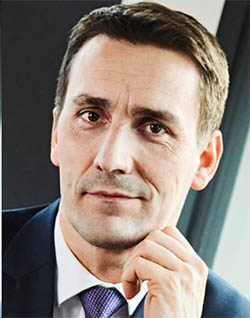Second phase of uprates at dukovany
In early April 2024 the operator of the Czech nuclear power plants Dukovany and Temelín, ČEZ, achieved the increased power of 1475 MWt for the first time at unit 3 of the Dukovany nuclear plant. This corresponds to 511 MWe and represents a 2.3% power uprate achieved without increasing fuel consumption or associated emissions.
When they were commissioned between 1985 and 1987, the Dukovany VVER-440 reactors had an original gross capacity of 440 MWe. After a nine-year modernization programme, the power of each reactor was increased to almost 500 MWe in 2013. Similarly, both VVER-1000 units at the Temelín nuclear power plant were modernized in stages between 2005 and 2024, reaching gross capacities of 1086 MWe – an increase of over 10% on their original capacity of 981 MWe each.
The preparation for the latest power uprate at Dukovany started in 2020, as part of the ‘design margins utilization’ programme, which includes the transition from a 12-month to a 16-month fuel cycle. This programme involved only limited modernization of some systems and adjustment of some basic parameters. The steam pressure was increased to transfer the increased reactor power. Consequently, the reactor coolant outlet temperature increased from 298.4 °C to 300.4 °C.
The power uprate will also be implemented at units 1&2 in 2024, and unit 4 in early 2025 to fit in with outage schedules.
The capacity uprate at Dukovany is part of the B32T (Bezpečně 32 terawatthodin, ‘32 TWh safely’) programme, which aims to achieve combined annual production from Dukovany and Temelín of 32 TWh by 2030, while planning to operate both plants for at least 60 years.
Interview: Bohdan Zronek, Director of the Nuclear Energy Division, ČEZ

The increase in thermal power by 2.3% might seem modest to some, so could you provide some context on the impact of this increase?
This is already the second phase of power uprating at Dukovany. The first phase took place from 2004 to 2013. ČEZ increased the reactor power by 5% and through the modernization of turbines, generators, unit transformers, along with several other minor steps to enhance operating efficiency, increased the power by an additional 8.5%. In total, during this first step the power of each unit was increased by 13.5% from the original 440 MWe to almost 500 MWe. The second phase of the power uprate utilized the design margins of the main equipment without the need for their replacement or modernization. The increase of reactor thermal power by another 2.3% on all four units will bring an annual production increase of approximately 300,000 MWh.
Do any of the changes, such as the higher water outlet temperature from the reactor, have any impact on the potential operating lifetime of
the reactor?
The fundamental condition for all changes and modifications carried out at Dukovany and Temelín is to be aligned with ČEZ’s priorities. This means they must not have any negative impact on the safe, reliable, and long-term operation of all units, which is currently planned to be at least 60 years. From this perspective, ČEZ thoroughly and extensively analyzed all significant changes and modifications, especially for power uprates and fuel cycle extensions. A modification gets the green light to proceed only when all these preconditions are met.
Is there potential for any of the changes implemented at Dukovany to be applied to other power plants operated by ČEZ or elsewhere?
Power uprates and fuel cycle extensions are standard modifications that have been carried out or are being planned at many nuclear power plants. At Temelín, the first phase of reactor power uprates was implemented in 2013 and 2014. Together with turbine island modifications, the output power of each reactor was increased from 981 MWe to 1086 MWe. Another uprate phase, based on equipment design margins similar to Dukovany, is planned around 2030 and will include the replacement of high-pressure turbine parts. Regarding the fuel cycle extension, Temelín has just got final regulatory approval and is currently in transition from a 12-month to an 18-month cycle. This transition should be completed at both units in 2026.
ČEZ has also introduced data-driven techniques to reduce electricity consumption at its Temelín plant. Could these adjustments be applied at Dukovany as well?
Specifically, this modification is maximizing grid delivery by optimization of turbine operation and power consumption of the tertiary circuit pumps (which pump cooling water from the turbine condensers to the cooling towers). These are the largest pumps, and largest power consumers, at the plant. The water flow and power consumption are controlled by adjusting the pump blades based on the processing (including AI integration) of numerous data such as cooling water temperature, air temperature and humidity, and weather prediction.
At Dukovany, the operation of these pumps has been optimized based on similar principles since 2012. Various operating modes of the pumps with different blade angles were tested when changing water and air temperatures. All of these operation modes were evaluated, and optimal operating modes were determined. Based on this obtained ‘library’ of operating modes, the pumps are operated according to water and air parameters.